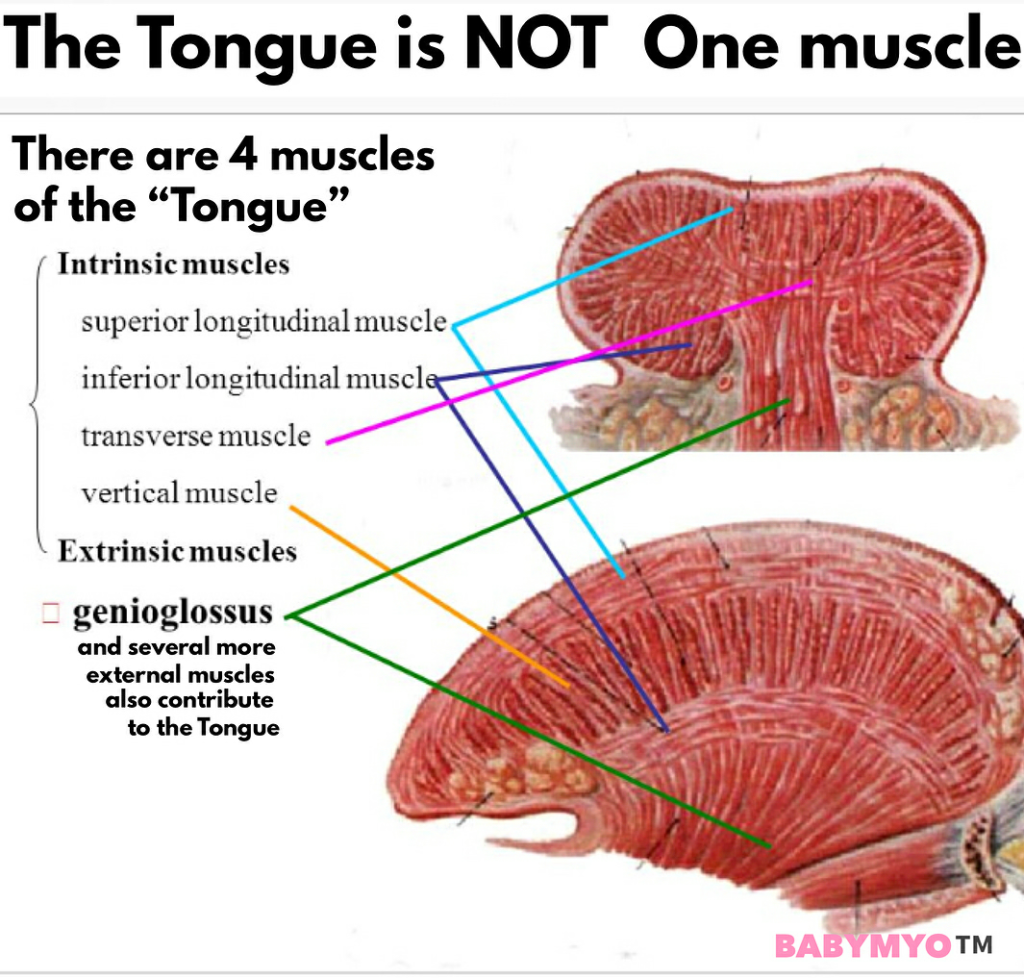The power of the tongue…from a physical perspective.
There has long been an association between the tongue and power, but it’s usually referring to the words that are spoken with it. While it is so very true that the tongue holds enormous power in that respect, it equally has enormous power in physical presence and performance.

This most powerful muscle is often called the ‘rudder’ of the body and most definitely plays a mammoth part in our speech, swallowing and breathing ability.
Did you ever stop to think about the actions of your own tongue? Where does it sit when you are breathing, how it moves when you are eating, drinking and speaking? There are so many actions that this powerful muscle performs night and day and consciously and subconsciously.
Sometimes we think of the tongue as single muscle however it is actually a collection of 4 muscles contained within its mass that co-ordinate to achieve the functions required to bring about action. Like any muscles in the body when one is not used often, used incorrectly or is inhibited from performing its job, there can be an imbalance or ‘functional shift’ which occurs. Because we have an amazing brain, there is often a compensation with other facial tissues, both hard (teeth and bones) and soft (facial muscles) and quite often both.
The natural and correct oral posture, swallowing and breathing can all be affected, and the consequences can be observed in the changes in the shape and function of the head and neck muscles, teeth and bones.
Tongue ties in babies, children and adults have been known to significantly affect health outcomes when they are present and causing a functional restriction in one or more ways.
In babies it may be feeding, swallowing and nasal breathing ability’ and restriction of optimal head shape if severe enough to be associated with torticollis. In older kiddies it might be swallowing, speech and airway issues (mouth breathing), sleep problems and digestion problems. In the adult population, it could be all of this as well as neck and shoulder pain, poor posture and teeth and jaw problems.
Tongue ties are determined by a combination of anatomical form and functional limitations. This is often overlooked if decisions are made on visual presentations alone. A tie which does not impede function needs no immediate action, whereas a less obvious tie (sublingual or ‘posterior’) may have incredible functional restrictions that often go undetected because the tie is not obvious. This is why the tongue-tie is often reported to be present in only in 4%-10% of the population. However, the percentage increases significantly when the tongue tie is looked at from a functional perspective. The functional aspect often becomes more apparent as the patient increases in age. The tongue is a muscle and will increase in size with normal growth and development but the connective tissue under the tongue may not.
An ‘unrestricted’ tongue can also be associated with facial growth and development problems if it is taught to function incorrectly. A persistent thumb or finger sucking habit, prolonged use of the bottle, dummy or ‘sippy’ cup can lead to incorrect swallowing patterns, typically called a ‘tongue thrust.’ Even in the absence of a thumb, finger or dummy, when the tongue lays low in the floor of the mouth instead of resting in an elevated position on the palate, there is an imbalance in the pressure placed on the developing top jaw (those cheek muscles are strong) and the palate can narrow significantly. This, in turn, can have an effect on the size of the nasal airway passages, and nasal breathing becomes even more difficult.
The presence of oversized tonsil or adenoid tissue, allergic rhinitis or sinus problems can also restrict nasal breathing and keep the tongue low to allow an ‘acceptable’ airway…except, of course, that it is not!
Adults can go their whole life not knowing that this strong and powerful muscle is impeding their ability to sleep well (why is your partner snoring?), breathe optimally (why does your partner breath through their mouth all the time?) or eat healthily. (Chewing, swallowing and digestion are often affected!)
The tongue’s placement in the oral environment and its ability to function correctly as a muscle in speech, swallowing and breathing is crucial to optimal health outcomes and dental/ facial development.
As an orofacial myologist and dental practitioner, I see the benefits of correct tongue placement and the complications of incorrect placement, deviated swallowing habits and functional restrictions every single day. Whether they are young or ‘more mature,’ being able to help my clients improve their health is incredibly rewarding. Sometimes it is a team effort (see the August article Who’s on Your Team?) but always, always, an important step toward creating a healthier life.
Orofacial myology is not just a set of ‘tongue exercises,’ it is a way of bringing about a change in the subconscious placement and function of this incredibly powerful group of muscles.
Sometimes a call or email can be life changing!
